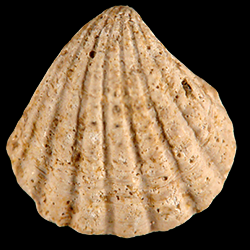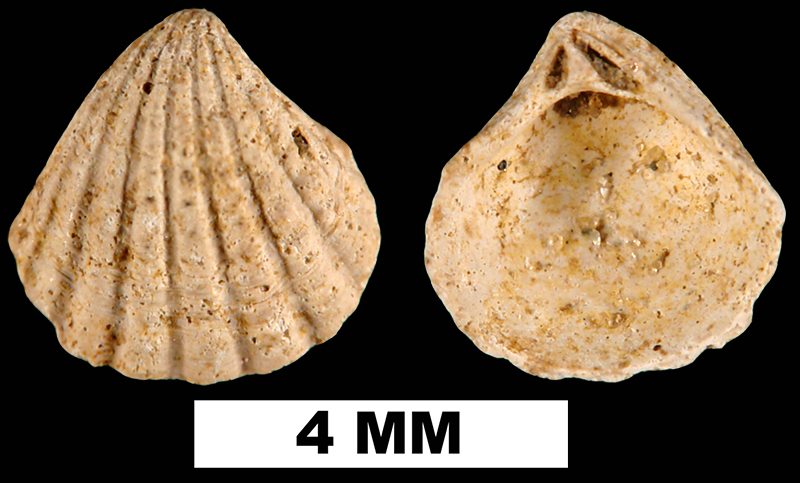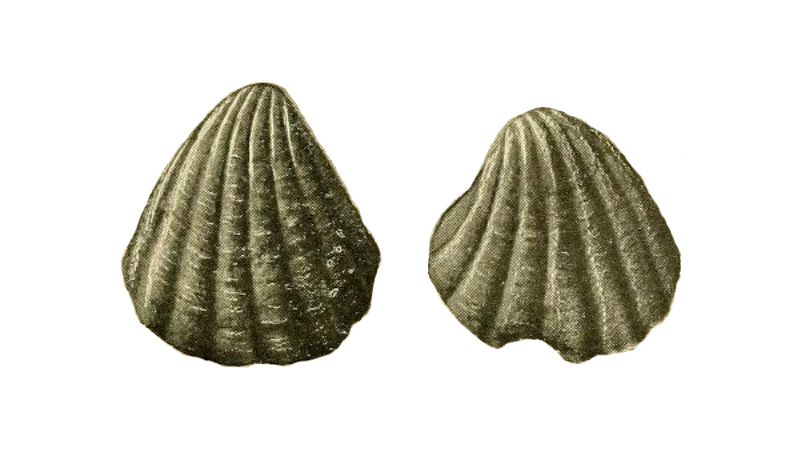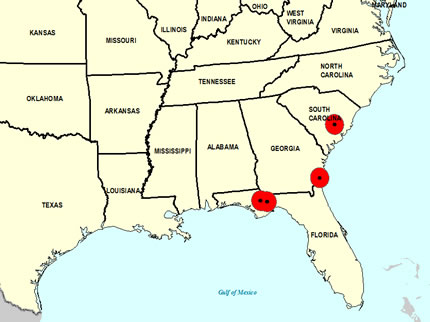
Pleuromeris scituloides

- Phylum: Mollusca
- Class: Bivalvia
- Order: Carditida
- Family: Carditidae
- Genus: Pleuromeris
- Species: Pleuromeris scituloides (Olsson, 1914)
Geological Range
Late Pliocene; Extinct.
Paleogeographic Distribution
Northern Florida to South Carolina.
Remarks
Original Description (from Olsson, 1914, p. 20):
"Shell small, solid; equilateral, convex triangular in shape; sculpture of 7-9 flat, broad ribs separated by narrow interspaces; umbones with the ribs coarsely or evenly granulated or sometimes smooth; on the basal portion, the ribs are crossed by coarse concentric lines; lunule smooth, very deep, elongated and of a length roughly one-half the height of the shell; escutcheon smooth, lanceolate; hinge rather high and heavy; internal margin fluted by the exterior ribs.
Height 5.50, width 4.75, thickness 5.50 mm.
This species bears much resemblance to V. scitula Dall of the Oligocene of the Oak Grove sands Florida. The most marked differences are the fewer ribs, those of V. scitula ranging from 12 to 14 in number and in having these ribs separated by narrower inspaces. From V. tridentata Conrad, the species is distinguished by its fewer ribs and by its shape.
Florida; Miocene of the upper bed at Alum Bluff."
To access this description in its original formatting through the Biodiversity Heritage Library, click here.
Stratigraphic Occurrences
- Late Pliocene
- Duplin / Raysor formations (GA)
- Jackson Bluff Formation (N. FL)
- Raysor Formation (SC)


